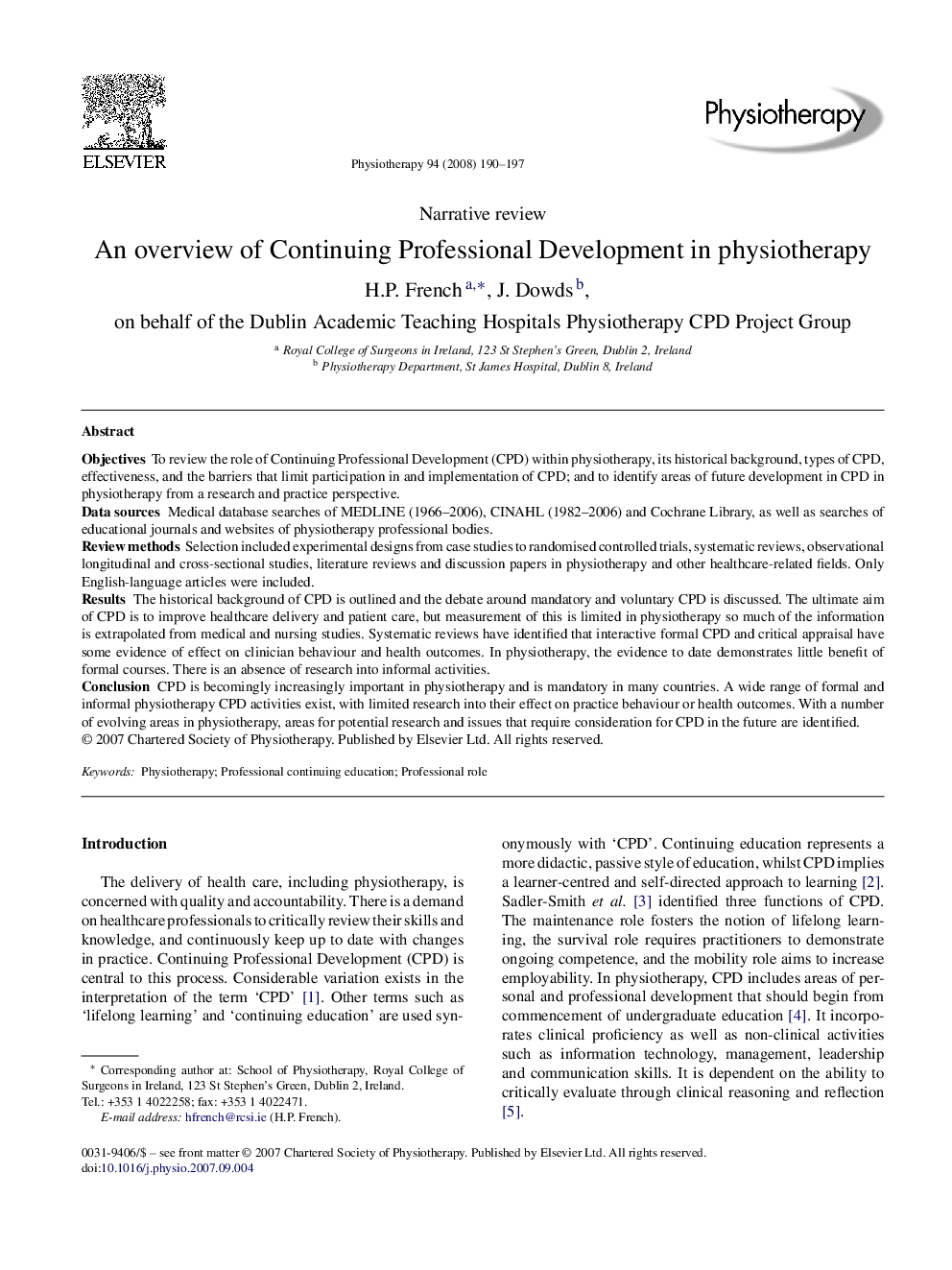| Article ID | Journal | Published Year | Pages | File Type |
|---|---|---|---|---|
| 2627558 | Physiotherapy | 2008 | 8 Pages |
ObjectivesTo review the role of Continuing Professional Development (CPD) within physiotherapy, its historical background, types of CPD, effectiveness, and the barriers that limit participation in and implementation of CPD; and to identify areas of future development in CPD in physiotherapy from a research and practice perspective.Data sourcesMedical database searches of MEDLINE (1966–2006), CINAHL (1982–2006) and Cochrane Library, as well as searches of educational journals and websites of physiotherapy professional bodies.Review methodsSelection included experimental designs from case studies to randomised controlled trials, systematic reviews, observational longitudinal and cross-sectional studies, literature reviews and discussion papers in physiotherapy and other healthcare-related fields. Only English-language articles were included.ResultsThe historical background of CPD is outlined and the debate around mandatory and voluntary CPD is discussed. The ultimate aim of CPD is to improve healthcare delivery and patient care, but measurement of this is limited in physiotherapy so much of the information is extrapolated from medical and nursing studies. Systematic reviews have identified that interactive formal CPD and critical appraisal have some evidence of effect on clinician behaviour and health outcomes. In physiotherapy, the evidence to date demonstrates little benefit of formal courses. There is an absence of research into informal activities.ConclusionCPD is becomingly increasingly important in physiotherapy and is mandatory in many countries. A wide range of formal and informal physiotherapy CPD activities exist, with limited research into their effect on practice behaviour or health outcomes. With a number of evolving areas in physiotherapy, areas for potential research and issues that require consideration for CPD in the future are identified.
